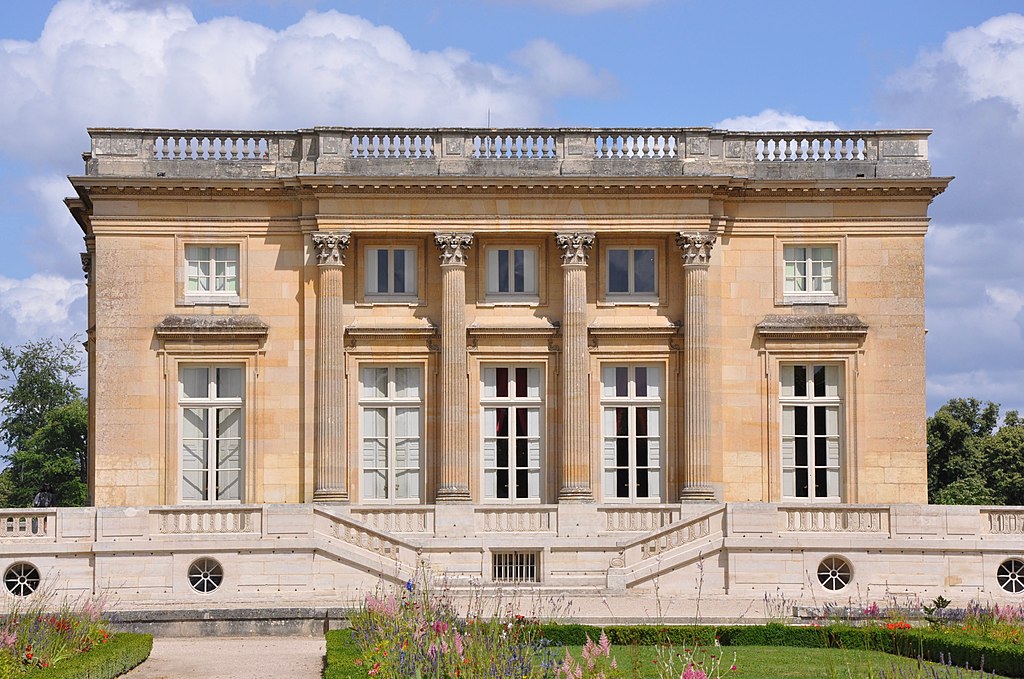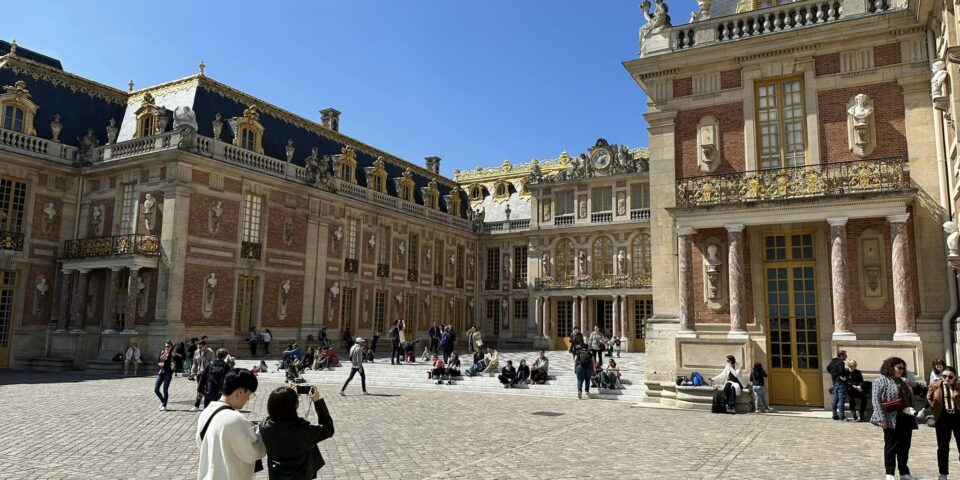- Vincent Benoit
- The best of France and its regions, Ile de France, Ile de France, Your guide: a committed professional
Chateau de Versailles : The unmissable places !
Château de Versailles is a renowned palace located in Versailles, France. It was built during the 17th century and served as the principal residence of French kings, including Louis XIV, Louis XV, and Louis XVI. The palace is renowned for its grandeur, opulence, and exquisite Baroque architecture.
The château’s interior is adorned with lavish decorations, intricate details, and luxurious furnishings. The Hall of Mirrors is one of its most iconic features, with its magnificent mirrors, crystal chandeliers, and breathtaking views of the palace gardens.
Speaking of the gardens, they are vast and meticulously landscaped, covering an area of over 800 hectares. Designed by André Le Nôtre, the gardens showcase geometric patterns, ornamental ponds, fountains, and meticulously manicured lawns.
In addition to the palace and gardens, Château de Versailles also encompasses other notable structures, such as the Grand Trianon and Petit Trianon. These smaller palaces were built to provide private retreats for the kings and queens.
Today, Château de Versailles stands as a symbol of French monarchy and represents the height of the Ancien Régime. It attracts millions of visitors annually who come to admire its architectural splendor, explore its rich history, and experience the magnificence of the French royal court.
Chateau de Versailles : book your Tour with a specialist !
The grand apartements
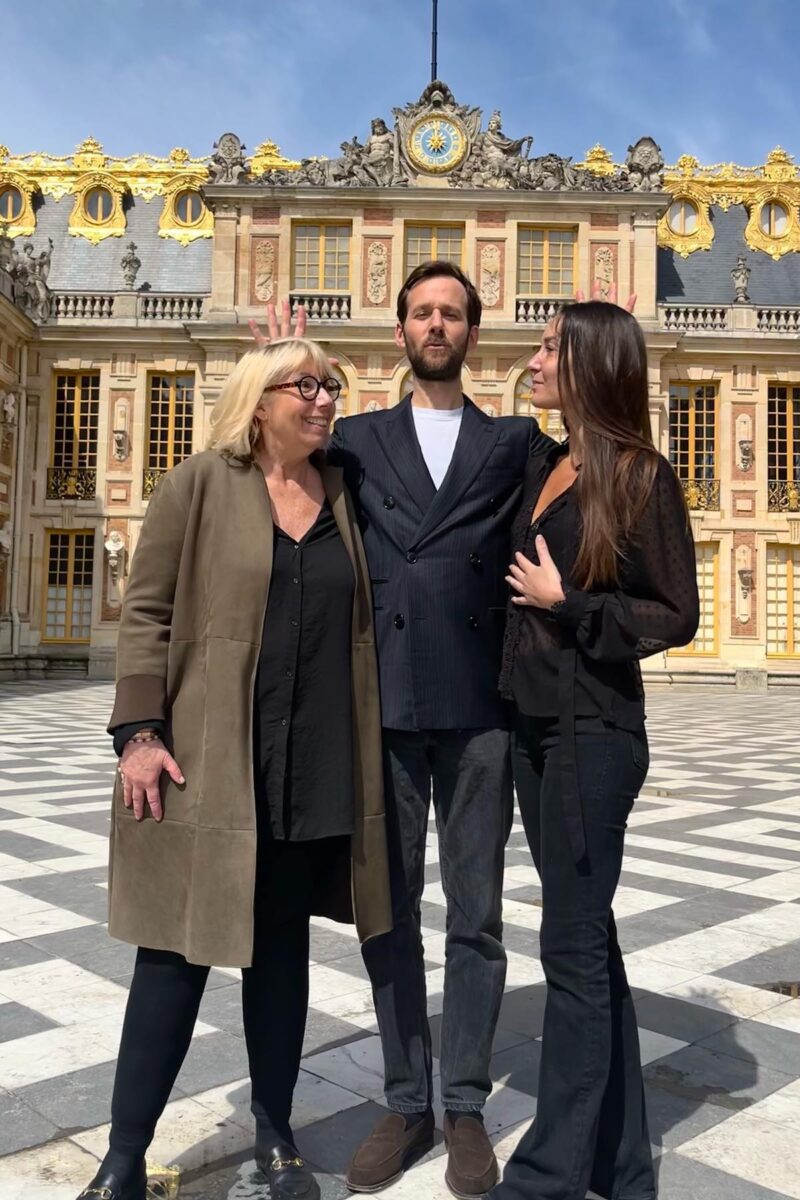
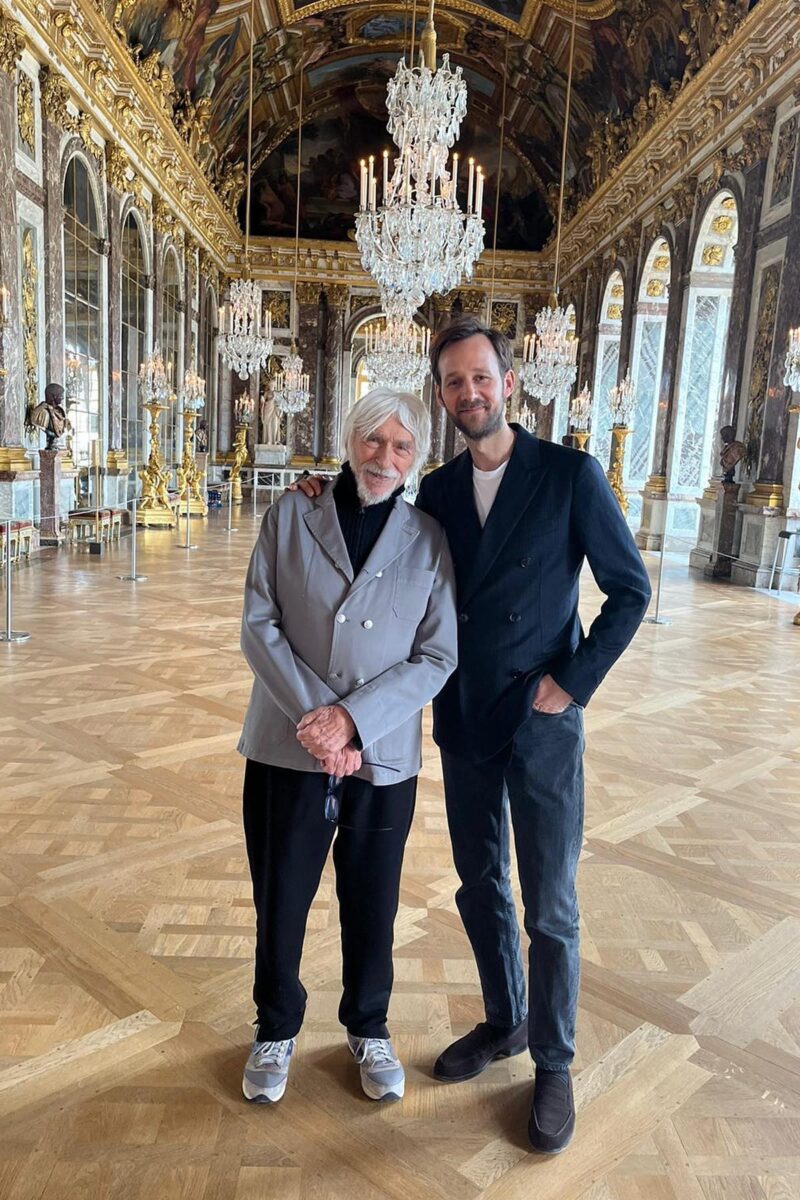
The Grand Apartments of Versailles refer to the suites of state rooms located in the Palace of Versailles. These apartments were used by the kings and queens of France for official functions and ceremonies. Here is a brief presentation of the main apartments:
King’s Apartment: This apartment was reserved for the king and included several rooms such as the King’s Bedroom, the Hall of the Bull’s Eye, and the State Bedchamber. The King’s Bedroom was the main room where the king slept and rose each day.
Queen’s Apartment: The queen’s apartment was situated on the other side of the king’s apartment and consisted of rooms such as the Queen’s Bedroom, the Grand Cabinet of the Queen, and the Queen’s Salon. These rooms were used by the queen for relaxation, receiving guests, and preparing herself.
Hall of Mirrors: This famous gallery is an iconic part of the Palace of Versailles. Adorned with mirrors, crystal chandeliers, and paintings depicting scenes from the life of Louis XIV, the Hall of Mirrors was used for grand receptions and official ceremonies.
Dauphin’s Apartment: This apartment was intended for the eldest son of the king, the dauphin, and included rooms such as the Dauphin’s Bedroom, the Dauphin’s Cabinet, and the Dauphin’s Library.
Dauphine’s Apartment: It was the apartment of the dauphin’s wife, the dauphine, and comprised rooms such as the Dauphine’s Bedroom, the Dauphine’s Small Cabinet, and the Dauphine’s Salon.
These grand apartments of Versailles were lavishly decorated with luxurious furniture, tapestries, paintings, and sculptures, showcasing the splendor of the French royal court of that time. They are now open to visitors who can admire the opulence and grandeur of the art and architecture of the era.
The Hall of Mirrors – Château de Versailles
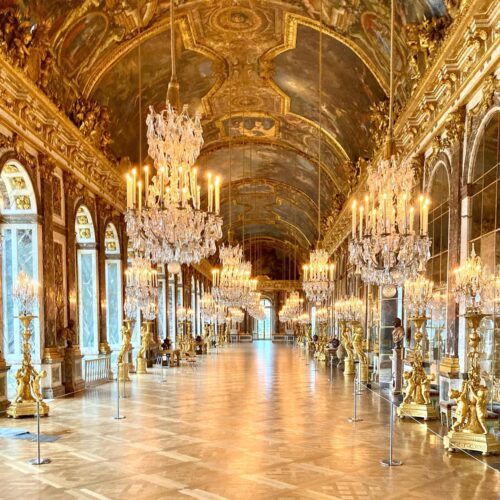
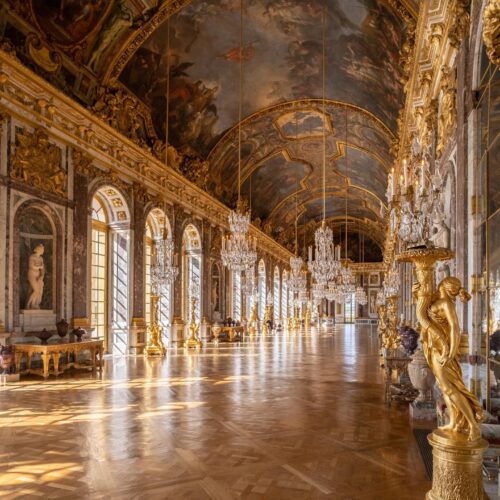
The Hall of Mirrors at Versailles is one of the most famous and iconic features of the palace. It is a grand gallery adorned with mirrors, chandeliers, and exquisite decorations. Here is a brief description of the Hall of Mirrors:
The Hall of Mirrors, or Galerie des Glaces in French, is a long and magnificent gallery located on the first floor of the Palace of Versailles. It stretches over 70 meters (230 feet) and is lined with 17 large mirrored arches that reflect the natural light entering through the opposite windows.
The mirrors in the gallery were considered a rare luxury at the time of its construction in the 17th century. They were manufactured by French craftsmen, using a technique that was a closely guarded secret. The mirrors were not only decorative but also served to amplify the light and create an illusion of infinite space.
The Hall of Mirrors was designed by the architect Jules Hardouin-Mansart and decorated by the painter Charles Le Brun. The walls are adorned with beautiful paintings, depicting significant events from the reign of Louis XIV, also known as the Sun King.
The grand chandeliers hanging from the ceiling add to the splendor of the Hall of Mirrors. These crystal chandeliers were crafted by the skilled artisans of the time and illuminated the gallery during evening events and celebrations.
The Hall of Mirrors served as a place for important ceremonies, receptions, and festivities held by the French monarchy. It witnessed significant historical events, including the signing of the Treaty of Versailles in 1919, which marked the end of World War I.
Today, the Hall of Mirrors continues to impress visitors with its opulent decoration and breathtaking views. It stands as a testament to the grandeur and artistic prowess of the Palace of Versailles, attracting millions of tourists each year who come to admire its beauty and immerse themselves in the history of this magnificent palace.
The Gardens of Chateau de Versailles
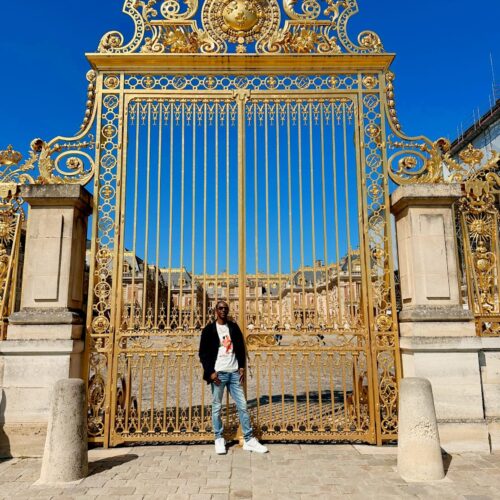

The gardens of Château de Versailles are a sprawling and meticulously landscaped masterpiece that surrounds the palace. Here is a brief description of the gardens:
Covering an area of over 800 hectares, the gardens of Versailles are a testament to the grandeur of French landscape architecture. Designed by André Le Nôtre in the 17th century, the gardens feature a harmonious blend of symmetrical patterns, ornamental ponds, meticulously manicured lawns, and stunning fountains.
The gardens are laid out in a formal style, with geometrically aligned paths and parterres. They are organized into distinct areas, each with its own unique features and charm. The grand axis, known as the Grand Canal, stretches for 1.5 kilometers (0.9 miles) and is lined with rows of trees and elegant sculptures.
One of the highlights of the gardens is the vast array of fountains. These fountains, adorned with beautiful sculptures and water features, were designed to entertain and delight visitors. During special events, such as the famous Fountain Shows, the fountains come to life with synchronized water displays accompanied by music.
Beyond the meticulously designed areas, the gardens also include tranquil groves, charming flower beds, and enchanting forests. These spaces provide visitors with peaceful retreats and picturesque settings to explore and enjoy.
The gardens of Versailles are not only a visual delight but also serve as an outdoor stage for various cultural events and concerts held throughout the year. Visitors can wander through the expansive grounds, marvel at the stunning vistas, and experience the magnificence of this historic landscape.
Overall, the gardens of Château de Versailles are a true masterpiece of landscape architecture, offering visitors a chance to immerse themselves in the beauty, tranquility, and grandeur of this renowned UNESCO World Heritage site.
Château de Versailles
Le Grand Trianon – Château de Versailles
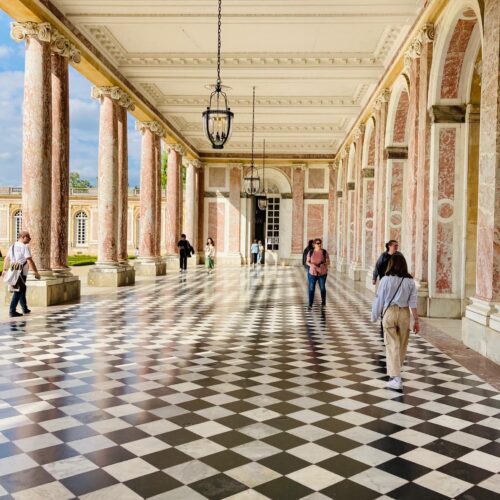
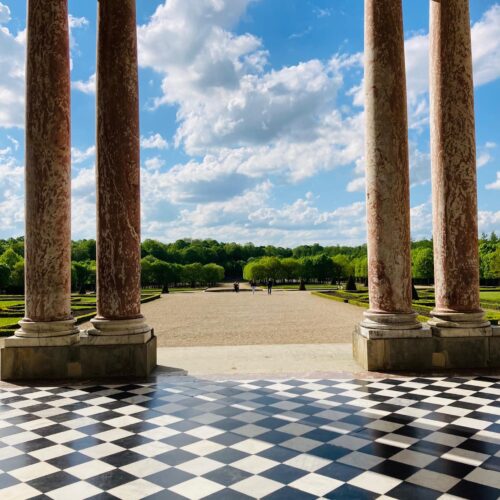
The Grand Trianon is a palace located within the grounds of the Palace of Versailles in France. Here is a brief description of the Grand Trianon:
The Grand Trianon, also known as the Trianon de marbre (Marble Trianon), is a small palace that served as a retreat for the French kings and queens. It was commissioned by Louis XIV in the late 17th century and designed by the architect Jules Hardouin-Mansart.
The palace is renowned for its elegant and refined architecture, combining elements of Classical, Italian, and French styles. Unlike the grandeur of the main palace, the Grand Trianon offers a more intimate and peaceful atmosphere.
The exterior of the Grand Trianon is characterized by its pink marble facade, which gives it a distinctive and elegant appearance. The palace is surrounded by well-manicured gardens, which enhance its charm and tranquility.
Inside, the Grand Trianon features beautifully decorated rooms, including the Queen’s Apartments, which were designed for Marie Antoinette. The rooms are adorned with fine furnishings, tapestries, and artworks, reflecting the exquisite taste of the French royal family.
Adjacent to the Grand Trianon is the Petit Trianon, another small palace that was later added to the estate. The Petit Trianon was a personal retreat for Marie Antoinette and allowed her to escape the formality of court life.
The Grand Trianon and the Petit Trianon, along with their gardens, offer a glimpse into the private lives of the French monarchy. They showcase a more intimate and relaxed side of Versailles, where the royals could enjoy leisurely activities and entertain close friends and family.
Today, the Grand Trianon is open to visitors, who can explore its elegant interiors, stroll through its gardens, and appreciate the refined beauty of this smaller royal residence within the grandeur of Versailles.
Chateau de Versailles : Le Petit Trianon
